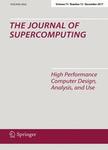版权所有:内蒙古大学图书馆 技术提供:维普资讯• 智图
内蒙古自治区呼和浩特市赛罕区大学西街235号 邮编: 010021

作者机构:Natl Inst Technol Dept Comp Sci & Engn Sikkim 737139 India
出 版 物:《JOURNAL OF SUPERCOMPUTING》 (超高速计算杂志)
年 卷 期:2023年第79卷第1期
页 面:541-572页
核心收录:
学科分类:0808[工学-电气工程] 08[工学] 0812[工学-计算机科学与技术(可授工学、理学学位)]
主 题:Imbalanced data GAAE Autoencoder Ensemble classifier Feature selection
摘 要:With the advancement of artificial intelligence (AI) and machine learning techniques, the diseases can be early diagnosed and detected with the help of known healthcare data of similar diseases. However, the analysis of healthcare data becomes challenging due to the imbalance behavior of such data. Such behavior has a skewed nature and the samples of imbalanced dataset contain the majority and minority instances. The quantity of majority instances is much higher than that of the minority instances. Thus, the classifier always gets biased toward the majority instances while classifying an unknown instance. This is not a perfect deal by any of the classifiers especially for disease diagnosis. Therefore, it is important to balance the dataset by considering both the majority and minority class samples. In this context, Genetic Algorithm based on Autoencoder (GAAE) model is proposed to process the imbalance data. Initially, an autoencoder is trained by the help of genetic operators and both the majority and minority samples. The chromosome is efficiently designed to represent an autoencoder. The error function is designed as the fitness function with the help of ensemble of classifiers. The optimized autoencoder generates the synthetic data of minority class to balance the data. Once the imbalanced data is balanced using the proposed GAAE, then the feature selection is done based on the correlation coefficient. Then various classifiers, multi-layer perceptron (MLP), k-nearest neighbor (k-NN), C4.5 decision tree (DT) and random forest (RF) are employed for the data classification. An extensive simulation is performed on the proposed approach and comparison is done with the existing approaches. It is observed that consideration of both the majority and minority samples to generate the synthetic data helps the classifiers to perform better. In addition, statistical analysis has also been performed.